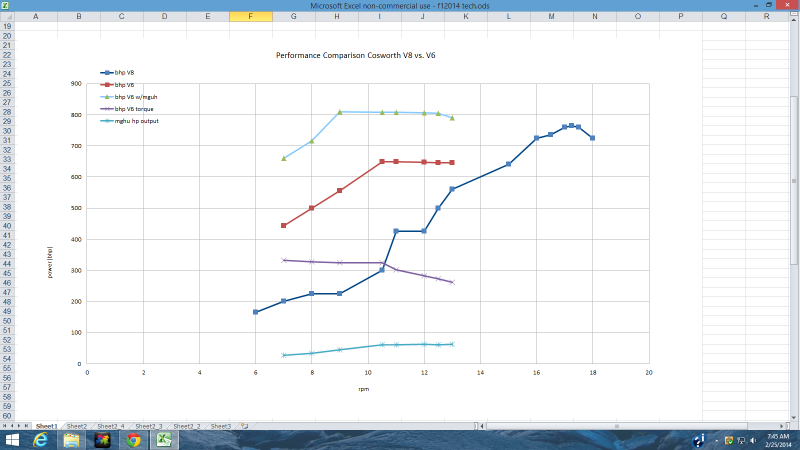atanatizante wrote:I`m trying to figure it out some rules from the above chart so indulge me with these following statements, please  :
:
1. MGU-K can use max. 4MJ/lap which is coming ONLY from the ES - battery - , right?
No. Your statement isn't entirely clear. It would be better to say that energy transfer from the ES to the MGU-K is limited to 4MJ. Energy transfer from the MGU-K to the ES is limited to 2MJ.
atanatizante wrote:2. Or in other measure units we could say that MGU-K has a max. power of 120KW that could be used for max.33,3 sec over a lap, right?
It is the maximum amount of time that the ES could power the MGU-K at maximum power.
atanatizante wrote:3. Also from the graph we see that MGU-H can provide the ES with the missing 2MJ of energy the MGU-K can`t recover per lap, right?
The MGU-H could supply 10MJ to the system - if the turbine could provide enough power.
The MGU-K won't be recovering 2MJ per lap on most circuits - at least not from braking.
atanatizante wrote:4. In addition, MGU-H can provide unlimited power for the MGU-K directly, right?
Correct.
atanatizante wrote:5. So if MGU-H could harvest more than 2MJ/lap this additional power could be used only AFTER the ES has been depleted with those 120KW/lap or AFTER 33,3 sec/lap (had they choose the max. power mapping with 120KW allowed by the rules per lap), right?
No, the use of the MGU-H to power the MGU-K is not dependent on the ES. In fact, there are more losses associated with storing the energy in the ES and then extracting the energy from the ES than for the direct link between the two MGUs.
It is unlikely that much of the MGU-H energy recovered will be sent to the ES. And basically any time the engine is at full throttle the MGU-H will be sending energy to the MGU-K.
The energy from the ES will be used to top that up or on acceleration when the MGU-H is not providing much recovered energy.
Some energy will be sent from the MGU-H to the ES, if only to be later used for spooling up the turbo.
atanatizante wrote:6. Now MGU-H is mechanically linked with the turbo, practically being on the same shaft with it, right?
The MGU-H is linked via a fixed gearing ratio and clutch to the turbo. The clutch allows the MGU-H to be disconnected from the turbo.
atanatizante wrote:7. And MGU-K is on the driveshaft and it`s also mechanically linked with MGU-H, right?
No. As Abarth points out, the MGU-H and MGU-K are only connected electrically, via the controllers and inverters.
The rules specifically forbid the MGU-H from being mechanically connected to anything other than the turbo.
atanatizante wrote:8. Regarding what you stated above we could assume that they need to run their ICE at their max. RPM coz this means max. RPM also for MGU-H, which in this case acts like a generator, hence produce more electricity/power and could be used by MGU-K in addition BUT APART from the 120KW allowed per lap, right?
Max rpm from the engine does not mean maximum rpm for the MGU-H.
It is likely that the MGU-H will reach maximum rpm at around the same time as the ICE reaches maximum power.
120kW is the power limit imposed on the MGU-K. If they can recover more in the MGU-H they are free to do so - but they can't send all that power to the MGU-K.
atanatizante wrote:9. So, in conclusion, it`s not a nonsense why all the teams are trying to run their ICE at their max. RPM, right?
Whether or not they are actually trying to run their engines at maximum rpm is conjecture at this point. They will only do so if there is benefit to doing so.





